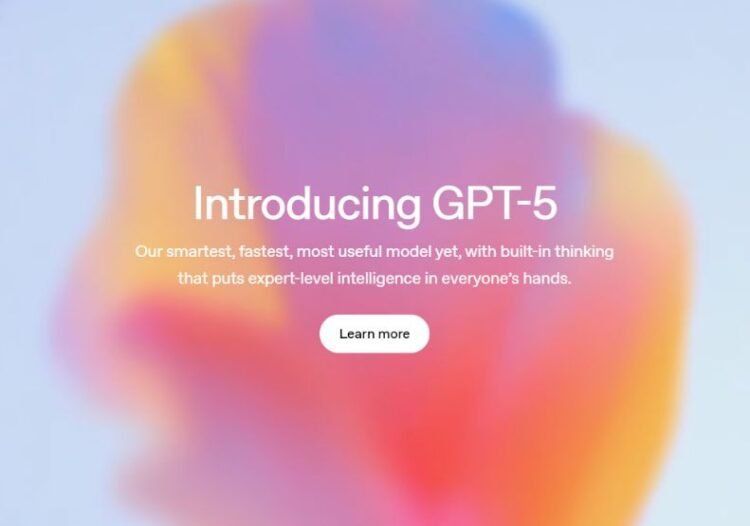Release Date: August 5, 2025 — the day AI took another leap.
When OpenAI officially stated, “We are releasing GPT-5 today,” it wasn’t just another model update, it was a signal that artificial intelligence is rapidly maturing into something more robust, scalable, and nuanced than ever before. As they declared in the launch announcement:
“This is the beginning of a new generation of AI systems that are more helpful, honest, and harmless.”
In a world already buzzing with AI hype, GPT-5 cuts through the noise with real substance. At Techwrix we’re going deeper into what truly makes GPT-5 different, why the new model family matters, and how this release reshapes the trajectory of generative AI. Stay tuned!
Why GPT-5 Isn’t Just an Upgrade
The jump from GPT-4 to GPT-5 isn’t cosmetic. This is a foundational overhaul. The new model was trained on a significantly larger dataset, exhibits longer-term memory, and supports more complex reasoning patterns. But here’s what makes it actually matter:
- Real-world reasoning: GPT-5 can track context across longer documents and conversations, giving it practical value for use cases like legal analysis, enterprise documentation, and long-form creative writing.
- Multimodal muscle: While GPT-4o set the stage for combining text, vision, and audio, GPT-5 tightens that integration. Expect smoother video analysis, higher-fidelity voice interactions, and more context-aware responses.
- Memory you can rely on: GPT-5 Pro supports persistent memory by default, making AI assistants more consistent, useful, and human-like over time.
If GPT-4 was the AI that could pass the bar exam, GPT-5 is the one that remembers your business strategy and helps you implement it.
GPT-5 Models
OpenAI quietly introduced not just a flagship but a suite of models in the GPT-5 family:
1. GPT-5 Pro
The full-strength powerhouse, used in GPT-5 Pro. This is the most capable version, optimized for:
- Advanced problem-solving
- Code generation
- Research-heavy workflows
“GPT-5 Pro provides stronger reasoning capabilities, more reliable memory, and real-time multimodal interactions.” — OpenAI Docs
2. GPT-5 Mini
GPT-5 mini isfaster and cheaper. Great for high-volume, cost-sensitive applications like chatbots, support systems, or bulk content generation.
- Lower latency
- Reduced compute cost
- Compatible with most GPT-4 API workflows
3. GPT-5 Nano
GPT-5 Nano is designed for edge use. Think mobile apps, embedded devices, or offline scenarios.
- Optimized for low-resource hardware
- Small memory footprint
- Still supports impressive language comprehension
This diversification signals a shift: OpenAI is no longer just building models — it’s building an ecosystem.
Read more: Top 11 AI Agents for 2025: Leading the Future of Artificial Intelligence
GPT-5: Its Smarter Than You Expect
While most headlines focus on GPT-5’s bigger IQ, there are layers that haven’t been talked about:
1. Agentic Workflows Are Now Real
With persistent memory and improved multi-turn logic, GPT-5 enables agents that not only act, but learn and improve over time. Picture:
- An AI project manager who adapts to your team’s pace and tone
- A medical assistant that tracks patient history across sessions
- An investor co-pilot that evaluates and rebalances portfolios continuously
2. Scalability Meets Personalization
GPT-5 supports fine-tuning on private data and APIs that allow contextual adaptation. Businesses can now:
- Build vertical-specific models with GPT-5 Mini
- Run Nano on-device for private, fast, and secure interactions
This means AI can finally feel personal and scalable.
GPT-5 Use Cases: The Next Generation
Here are scenarios where GPT-5 quietly revolutionizes things:
- Education: GPT-5’s memory allows it to become a persistent tutor, tracking a student’s growth and weaknesses.
- Enterprise: Legal, compliance, and finance teams can finally rely on AI that understands dense, evolving regulatory text.
- Healthcare: With better reasoning and privacy-aware models (Nano), patient data can be used to create truly useful AI support tools.
- Software Development: GPT-5 Pro handles full-stack prompts with greater consistency, making it a real coding partner.
A Smarter AI, A Smarter Ecosystem
Unlike previous rollouts, GPT-5 isn’t just a product—it’s a platform. The shift toward model variants, persistent memory, and multi-modal APIs marks a clear intent: OpenAI is laying groundwork for a world where AI is everywhere, from enterprise dashboards to smart earbuds.
And because OpenAI now allows more control, fine-tuning, and reliability, developers aren’t just users, they’re co-creators.
Final Thought: Don’t Just Watch the Leap, Build with It
GPT-5 isn’t about replacing humans; it’s about scaling human capability. Whether you’re a founder, developer, teacher, or strategist, this release opens the door to smarter, more persistent, and deeply contextual AI.
As OpenAI put it: “This is the beginning of a new generation of AI systems that are more helpful, honest, and harmless.”
It’s your move now.

















